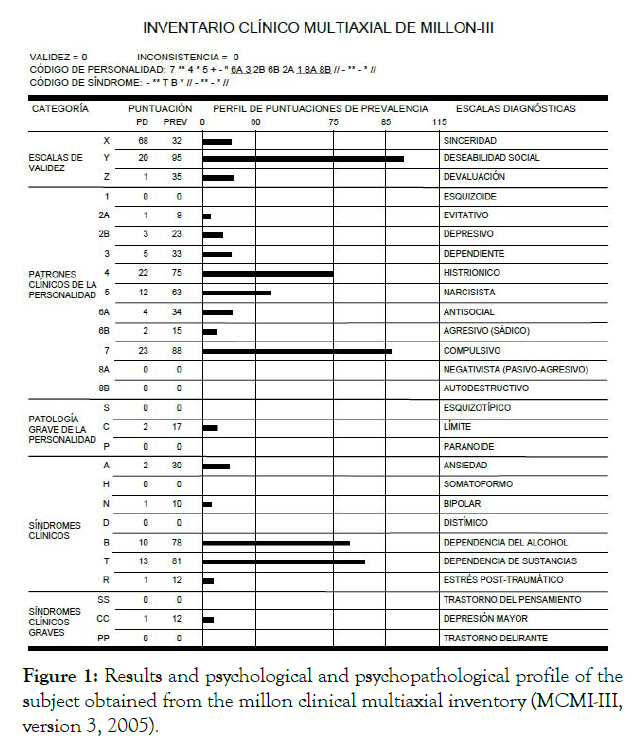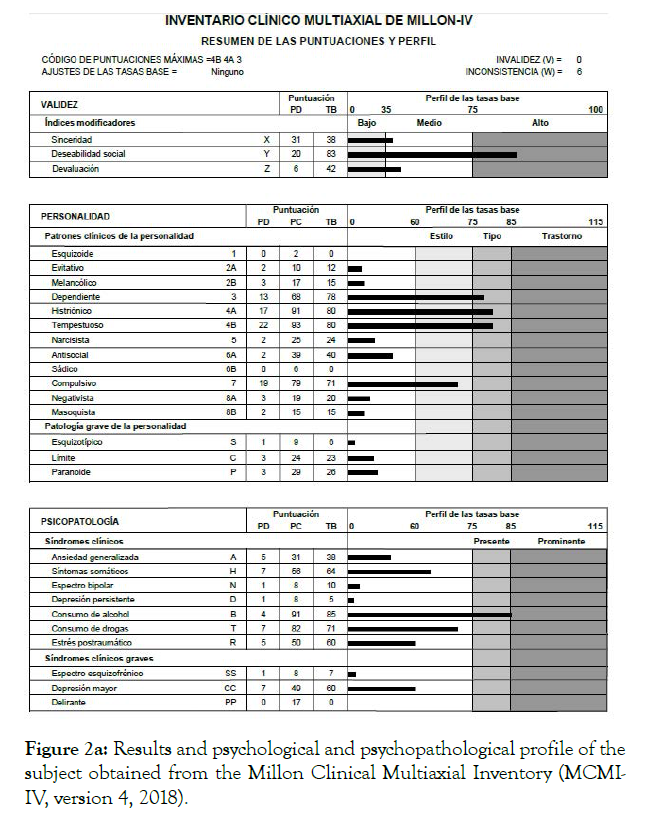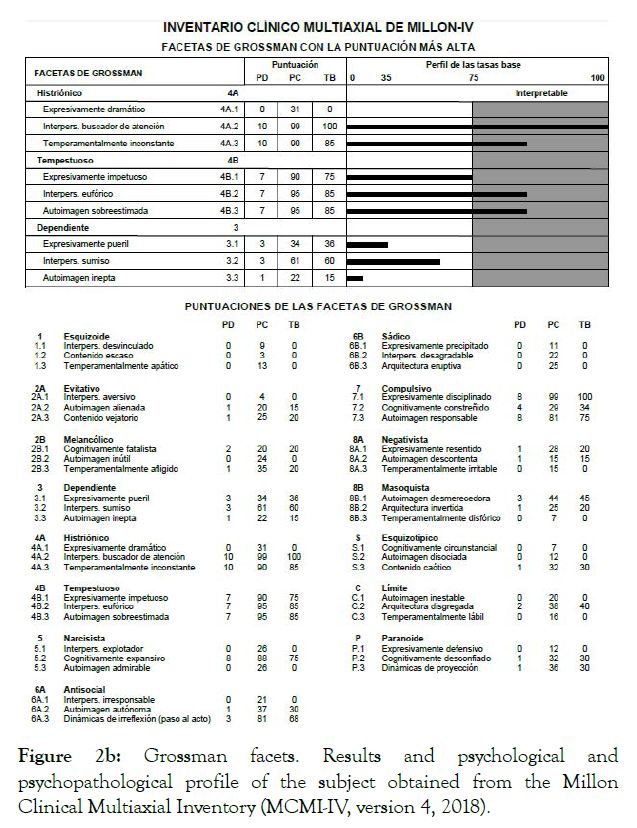Journal of Alcoholism & Drug Dependence
Open Access
ISSN: 2329-6488
ISSN: 2329-6488
Research - (2021)
The origin and undertaking of aggressions appear mainly in three situations [1]:
1. Crime against the will and sexual freedom of the victim. By physical-sexual aggression, or coercion or physical reduction of the victim by the aggressor.
2. Because the victim suffers a degree of mental impairment (mental disability):
• Subjects with Borderline grade (IQ 70-80), Mild grade (IQ 50-70) and Moderate grade (IQ 35-50): in whom cognitive and/or volitional abilities would be partially diminished.
• Severe grade (IQ 20-35) and Profound grade (IQ 0-20): in whom the cognitive and volitional capacity would be totally diminished.
3. Due to the phenomenon called “Chemical Submission”. Due to the frequency with which it is associated with sexual crimes, the acronym DFSA (“Drug Facilitated Sexual Assault”) is used.
Chemical submission can be defined as the administration of psychoactive substances to a person for illegal and/or criminal purposes, being basically of a sexual nature. Chemical submission constitutes a criminal act whose prevalence is still low, although increasing [1, 2].
The chemical substance is not only supplied without the consent of the victim, who is also unaware of its presence, but it is also administered surreptitiously and under fraudulent conditions. The desired effects of administering the chemical substance to the victim are to produce a sedative and hypnotic effect that alters their behaviour in order to practice criminological-illegal behaviour on them. In this case, it is a question of provoking a decrease in the victim's volitional capacity and subjecting her, against her free will, to sexual assault [1].
The complexity of detecting cases of chemical submission is that the toxicological diagnosis is difficult. The products used often have a very short half-life, circulating concentrations are low, and analyses are performed late. The time elapsed between the events, the reporting of the crime and the recognition of the victims is usually long in relation to the time for detecting drugs in biological fluids [1].
As such, risk situations for the perpetration of paedophilic behaviours must be considered, as explained in the following points [3]:
• An unsatisfactory sex life.
• A continuous and permanent interpersonal contact with minors and young adolescents, a population which for potential aggressors present a higher level of accessibility and which has a lower capacity for physical and psycho-emotional autonomy of resistance, with a greater risk of vulnerability and psychological frailty. In turn, potential victims may present emotional deficiencies due to weak family ties, coming from unstructured families, mistreatment within the family, etc.
• An asymmetric age relationship in which the minor places their trust in the aggressor due to their status or social position; this facilitates the undertaking of criminal conduct of a sexual nature to be accompanied by the discrediting of the minor by unbelieving families [4-9].
This is a case involving a 50-year-old man who worked as a therapeutic masseur.
According to the sentence handed down, the following were considered as proven facts:
The victim's mother hired an alleged therapeutic massage specialist to treat her 14-year-old daughter, who suffered - at that time - from anxiety and smoked joints (marijuana), in order to detoxify her and calm her anxiety through such massages.
The victim - a minor - began to go to the therapeutic massages provided by the defendant, who gave her a total of eight sessions. During the period in which the massages were performed, the accused tried at all times to create an atmosphere of daily life, complicity and secrecy with her, giving her gifts of underwear, asking her not to tell her mother or her friends, and proposing that they go alone to the mountains, the beach or home for therapy. As the days went by and he exceeded his role as a therapist, the accused intensified his sexual approach to the girl.
From the very first session, the defendant raised intimate questions with the victim and although at first he left the room while the minor was undressing, later he began to be present at those moments with apparent naturalness [10-13].
During the execution of the massages, the accused gradually exceeded the professionally permitted body parts (such as the head, back, torso and legs). While massaging her, he expressed admiring opinions about the beauty of her body, an extreme situation that caused severe discomfort to the victim. On at least one occasion and without her noticing the fact, because she was dozing on the massage table due to the effects of a sedative, he took pictures with his mobile phone, where the minor appeared topless.
As a result of the friendship that was established between the accused and the victim, on one occasion the mother and daughter visited the home of the accused to have lunch. The latter, taking advantage of the fact that the mother had to be absent to run an errand, offered to give the victim a massage that was not contracted. Before doing the massage, the defendant offered the minor a marijuana cigarette so that, according to him, she would reach a higher level of relaxation with the consumption of said substance and also proposed that she try on some underwear that he had prepared for her. The victim agreed to smoke the marijuana, after which the defendant presented her with a bag of marijuana that he had taken from a shelf in the closet. When the mother returned from the errand, she found the minor lying on the sofa, naked and covered with a blanket up to her mouth as if she were under the toxic effect of the marijuana supplied.
Parallel to this event, another 14-year-old victim attended five massage sessions with the accused. The victim had anxiety problems that she intended to alleviate with massage therapy. From the beginning of the professional relationship, the defendant tried to create a bond of complicity and secrecy with the victim, so he suggested that she stay at his house to sleep and he could give her a massage on the beach; he offered her his telephone number so that she could turn to him when she had conflicts with her mother; praised her and said that she was his favourite. He subtly went further in his sexual approach to her.
In the first session, he asked her questions that infringed her privacy and in the following sessions he insisted that she try on, exclusively for him, underwear that he took from a closet. During the massages he channelled his hands towards her external genitalia and breasts, while making complimentary comments about her beauty. One day the minor was receiving a massage for more than an hour and when she left and went to sit in the car, she jumped in pain because she "hurt a lot and she couldn't sit down". Even her mother could appreciate that both breasts were erythematous and the girl told her that she had only been fifteen minutes and not the sixty that she had actually spent with the masseur [14-16].
In summary, the accused, after gaining the sympathy of both minors and their mothers, taking advantage of his status as a massage therapist and breaking the bonds of trust with the mothers who placed the minors under his care, used arguments related to his profession to justify touching the intimate areas of the victims such as breasts or groins, this behaviour causing a self-consciousness and shame in the minors, who initially kept silent at the request of the accused himself (Figures 1 and 2).

Figure 1: Results and psychological and psychopathological profile of the subject obtained from the millon clinical multiaxial inventory (MCMI-III, version 3, 2005).

Figure 2a: Results and psychological and psychopathological profile of the subject obtained from the Millon Clinical Multiaxial Inventory (MCMIIV, version 4, 2018).

Figure 2b: Grossman facets. Results and psychological and psychopathological profile of the subject obtained from the Millon Clinical Multiaxial Inventory (MCMI-IV, version 4, 2018).
In order to objectify the psychological status of the accused, the Millon Clinical Multiaxial Inventory was carried out (version 3 of 2005 and version 4 of 2018).
It is observed that both psychological tests, with regards to the validity scales, present a high index on the “Social Desirability” scale (PREV score = 95 in the MCMI-III and TB score = 83), which suggests that the defendant tries to offer the most positive image of himself possible and that he does not have any type of problem. The rest of the scales, belonging to said validity scales, are in statistical normality, being sincere and not offering a defeatist self-image.
In this way, and with regard to the MCMI-III, what stands out are the basic personality traits of the narcissistic-paranoid type (scores of 83 and 79, respectively), as well as a tendency to delusional disorder (score of 75). It should be noted that the subject does not present a tendency towards psycho-emotional dependence, being notable his tendency towards the capacity for personal autonomy (“Dependency” Scale with a score of 40). From the MCMI-III, and due to the low significance of the scores of the rest of the clinical scales, the absence of psychic alteration or dysfunction can be deduced, which suggests that the subject has reasoning and analytical capacity (capable of emotional self-control).
Clinical personality patterns coincide in the presence of basic personality traits of the compulsive-histrionic type and of the tempestuous type (in the MCMI-IV). Said combination of scales is compared with a basic psychopathic profile, characterized as subjects of an impulsive and/or theatrical type of behavioural nature in order to control and manipulate their potential victims and achieve their intentions.
Likewise, both tests show statistically significant scores on the scales pertaining to toxic dependence, which are the following:
• MCMI-III: Alcohol dependence (PREV score = 78) and Substance dependence (PREV score = 81).
• MCMI-IV: Alcohol dependence (TB score = 85).
The description of the case reveals the following criminological elements of forensic importance:
1. The subjugation of the victim through chemical submission, in this case, through the use of marijuana (a substance known as psychodysleptic that diminishes the activity of the central nervous system).
2. The criminal and surreptitious practice of chemical submission on underage victims.
The aforementioned, on the basis that the figure of the minor is a fragile, sensitive and vulnerable victim to harmful external influences, in such a way that the submission against their will based on the consumption of toxins that reduce the activity of the cognitive and/or volitional capacities, facilitates the execution of the crime through greater ease and accessibility to the victims, maximizing a harmful intention on them.
3. The involvement and/or adherence to toxic substances by the perpetrator cause their criminal intent to intensify or aggravate in order to achieve their sexual purpose with minors, transmitting their addictive behavioural pattern to the victims. This means that, from the point of view of forensic praxis, it is necessary to collect information on the content of thoughts and cognitive distortions presented by the aggressor.
Citation: Tiffon BN, Fernández JG (2021) Chemical Submission with Cannabinoid Substances and Prevailment in the Case of Sexual Abuse of Minors. J Alcohol Drug Depend 9: 352.
Received: 22-Jul-2021 Accepted: 10-Aug-2021 Published: 17-Aug-2021 , DOI: 10.35248/2329-6488.21.9.352
Copyright: © 2021 Tiffon BN, et al. This is an open-access article distributed under the terms of the Creative Commons Attribution License, which permits unrestricted use, distribution, and reproduction in any medium, provided the original author and source are credited.